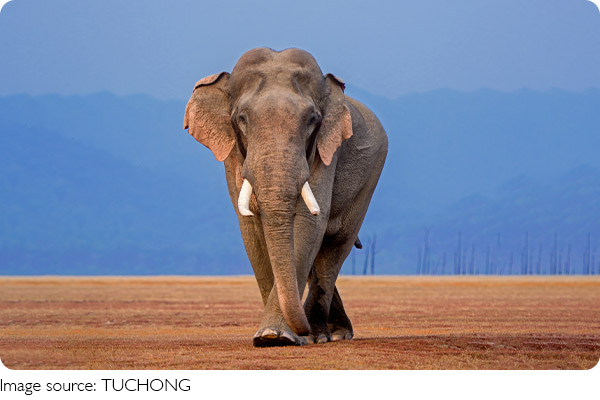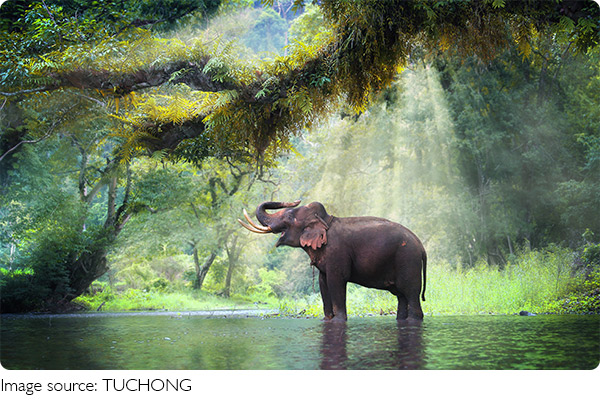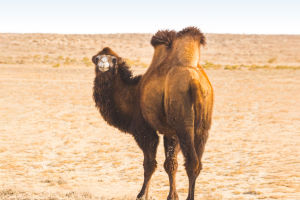Clever Giants

When most people think of elephants, they picture their enormous bodies, long trunks, and gentle presence. But did you know elephants are also some of the most intelligent tool users in the animal kingdom?
These gentle giants use tools in the wild to solve problems, protect themselves, and even care for others. Their behavior shows advanced thinking, memory, and creativity that rival some primates and dolphins.
Let's take a closer look at how elephants use tools in their natural habitats and what this reveals about their amazing intelligence.
What Is Tool Use in Animals?
Tool use refers to any behavior in which an animal selects or modifies an object in its environment to achieve a goal. This can include using a stick to dig, a leaf to swat insects, or even a rock to break something open. Scientists consider tool use a sign of problem-solving skills and higher brain function.
In the case of elephants, tool use often involves branches, leaves, mud, and even their own dung. But what's fascinating is not just what they use, but how thoughtfully they use it.
Swatting Away Insects with Branches
One of the most common examples of tool use among elephants is using branches as fly swatters. Elephants will break off a branch, hold it with their trunk, and swat it around their body to keep away flies and biting insects. Some even modify the branch — removing leaves or shortening it — to make it more effective.
This behavior shows not only a desire for comfort but also the ability to identify a problem and create a practical solution. Just like we grab a fan or bug spray, elephants create their own tools for relief.
Using Mud and Dust for Skin Protection
Elephants are famous for their love of dust baths — but these are more than just fun. When they throw mud or dust on their backs using their trunks, they're actually protecting their skin from the sun and insects. The mud acts like a natural sunscreen and bug repellent.
While this might seem instinctive, researchers classify it as a form of tool use, because elephants are deliberately using materials in their environment to solve a physical problem — in this case, skin care.
Plugging Water Holes with Bark or Mud
In dry environments, elephants have been observed digging for underground water. After drinking, some will plug the hole with bark, stones, or mud, saving the water for later. This is an impressive example of planning for the future, a behavior previously thought to be unique to humans and a few other intelligent animals.
This practice not only benefits the individual elephant but sometimes helps other animals in the area who later access the same hidden water source.
Using Objects as Weapons or Barriers
Elephants may also use objects like logs or large branches to protect themselves. For example, they've been seen placing large logs across paths to block predators or even push objects to scare away smaller animals. In one documented case, an elephant used a rock to scratch an itch in a hard-to-reach spot — another clever use of the environment to solve a personal problem.
These examples suggest that elephants can not only use objects but also adapt them to different situations, which is a strong indicator of flexible intelligence.
Helping Others with Tools
Perhaps the most heartwarming examples of elephant tool use are those that involve helping others. Elephants are known for their social bonds and empathy. In some rare observations, elephants have been seen helping injured group members by using branches to gently touch or comfort them.
While not all scientists agree on how conscious these acts are, they suggest a level of emotional intelligence that is rare in the animal kingdom.
This kind of behavior supports what researchers have long suspected — that elephants don't just use tools for themselves but may also use them in social and cooperative ways.
What Science Says About Elephant Intelligence
According to a 2020 article, elephants display "remarkable cognitive abilities," including self-awareness, empathy, and problem-solving. Dr. Joyce Poole, a leading elephant behavior expert, has documented many cases of tool use among African elephants, noting that their memory and ability to learn from others are key parts of their intelligence.
Elephants also have enormous brains, especially in areas related to emotion and decision-making. Their brains weigh about 5 kilograms — more than three times that of humans — giving them one of the largest brain-to-body ratios in the animal world.
What This Means for Conservation
Understanding elephant intelligence is more than just fascinating — it has real-world value. If we recognize that elephants are tool users and problem solvers, it helps build stronger arguments for protecting their habitats. They are not just "big animals" but complex beings that need space, community, and learning opportunities.
Organizations like Save the Elephants and the World Wildlife Fund use behavioral research to design smarter conservation efforts that respect elephants' natural intelligence and social needs.

How You Can Help
There are several ways to support elephants and their future:
• Support wildlife sanctuaries that focus on elephant rehabilitation.
• Avoid attractions that exploit elephants for entertainment.
• Choose sustainable products that don't contribute to habitat destruction.
• Educate others about how intelligent and socially complex elephants truly are.
By appreciating their tool use and intelligence, we move closer to seeing elephants as fellow thinkers on this planet — not just wild creatures to be admired from afar.
Conclusion: Big Minds Behind Big Trunks
Elephants are more than their size — they are thinkers, planners, and even problem-solvers with tools. Whether they're fanning away flies, storing water for later, or helping a friend with a branch, their actions show creativity and care. Next time you see an elephant in a video or a wildlife documentary, take a moment to consider just how brilliant they are.
Have you ever seen or read about elephants using tools? Share your thoughts — and let's keep celebrating the quiet genius of the animal world together.


